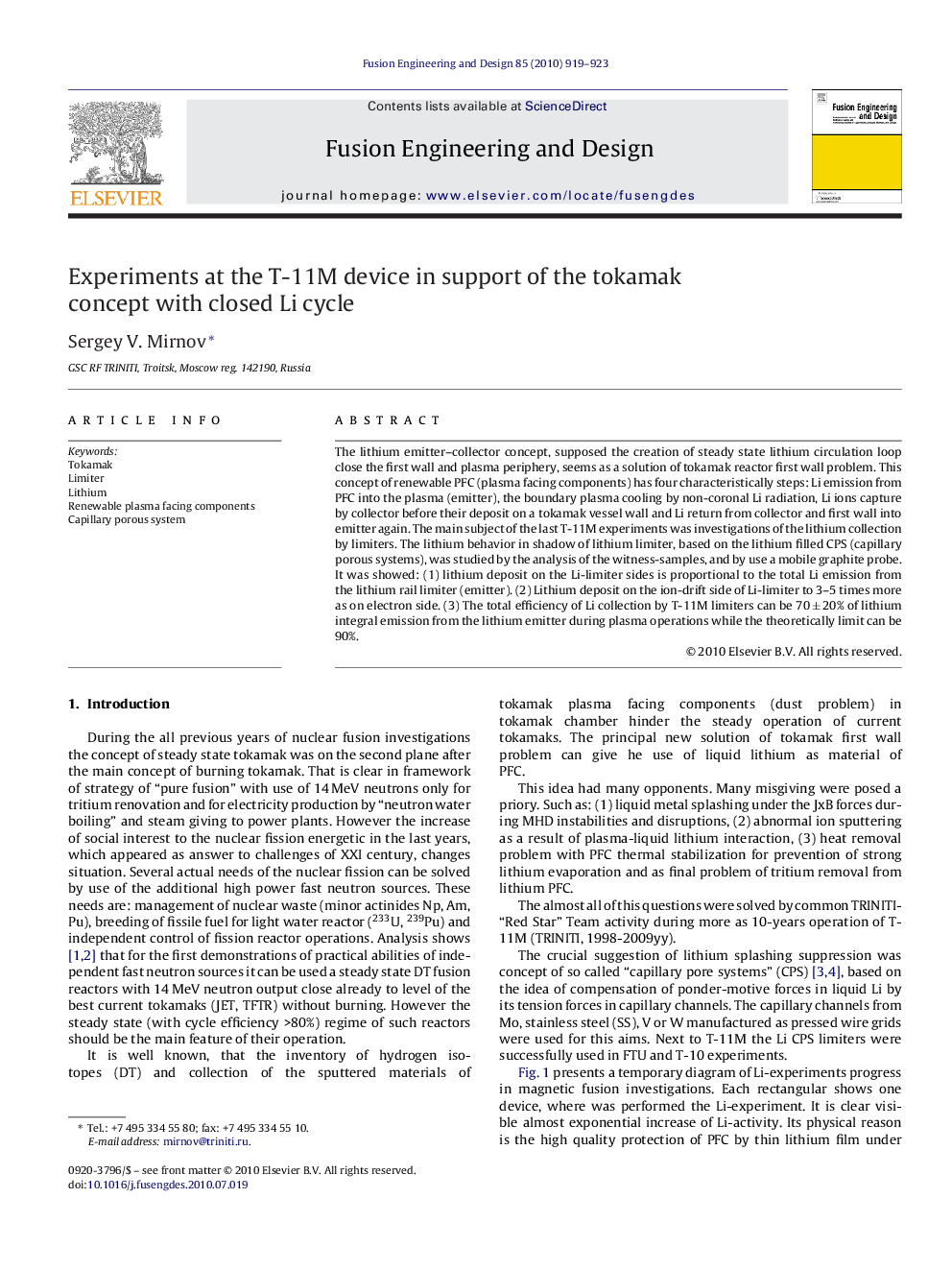| کد مقاله | کد نشریه | سال انتشار | مقاله انگلیسی | نسخه تمام متن |
|---|---|---|---|---|
| 272887 | 505035 | 2010 | 5 صفحه PDF | دانلود رایگان |

The lithium emitter–collector concept, supposed the creation of steady state lithium circulation loop close the first wall and plasma periphery, seems as a solution of tokamak reactor first wall problem. This concept of renewable PFC (plasma facing components) has four characteristically steps: Li emission from PFC into the plasma (emitter), the boundary plasma cooling by non-coronal Li radiation, Li ions capture by collector before their deposit on a tokamak vessel wall and Li return from collector and first wall into emitter again. The main subject of the last T-11M experiments was investigations of the lithium collection by limiters. The lithium behavior in shadow of lithium limiter, based on the lithium filled CPS (capillary porous systems), was studied by the analysis of the witness-samples, and by use a mobile graphite probe. It was showed: (1) lithium deposit on the Li-limiter sides is proportional to the total Li emission from the lithium rail limiter (emitter). (2) Lithium deposit on the ion-drift side of Li-limiter to 3–5 times more as on electron side. (3) The total efficiency of Li collection by T-11M limiters can be 70 ± 20% of lithium integral emission from the lithium emitter during plasma operations while the theoretically limit can be 90%.
Journal: Fusion Engineering and Design - Volume 85, Issue 6, November 2010, Pages 919–923